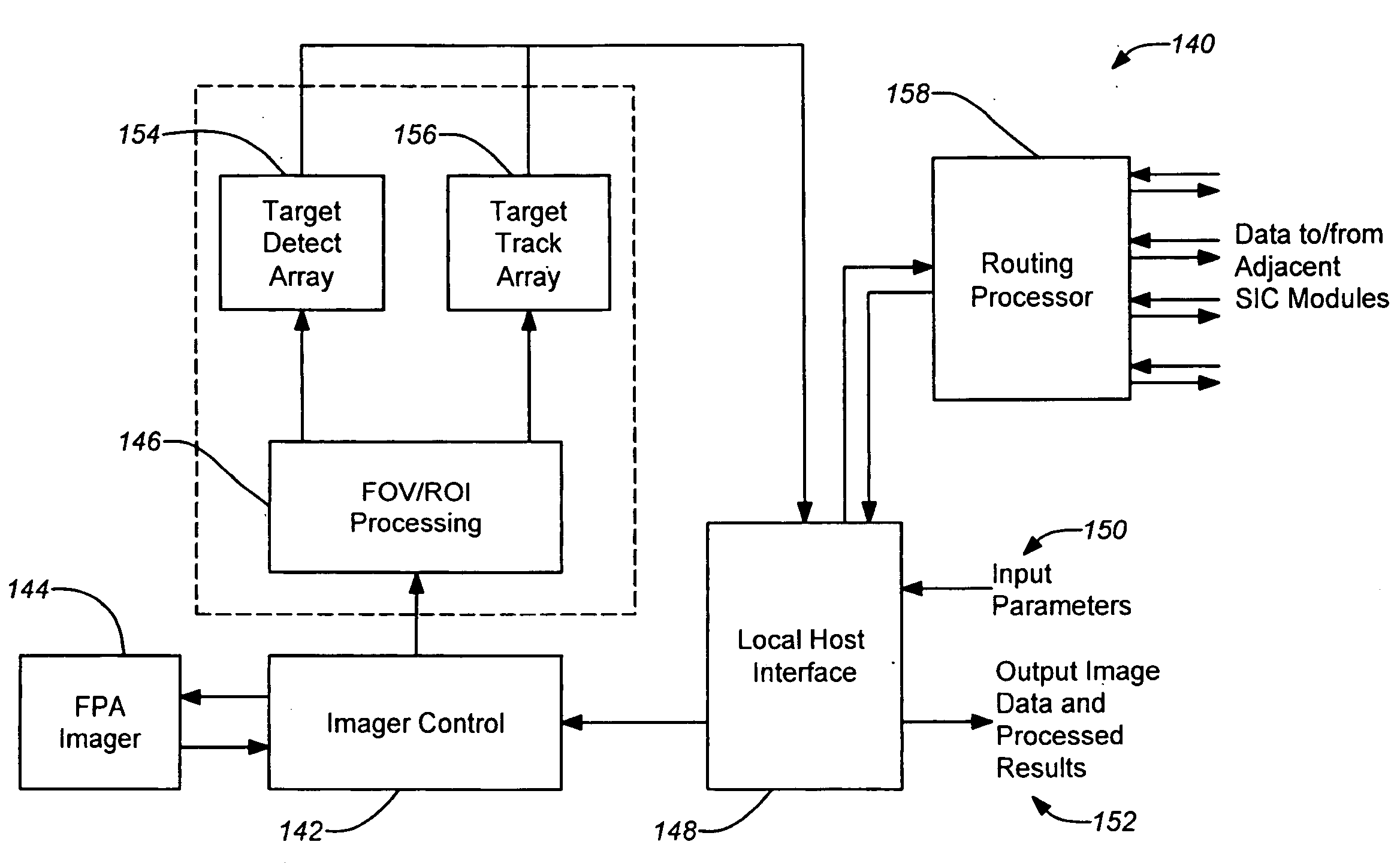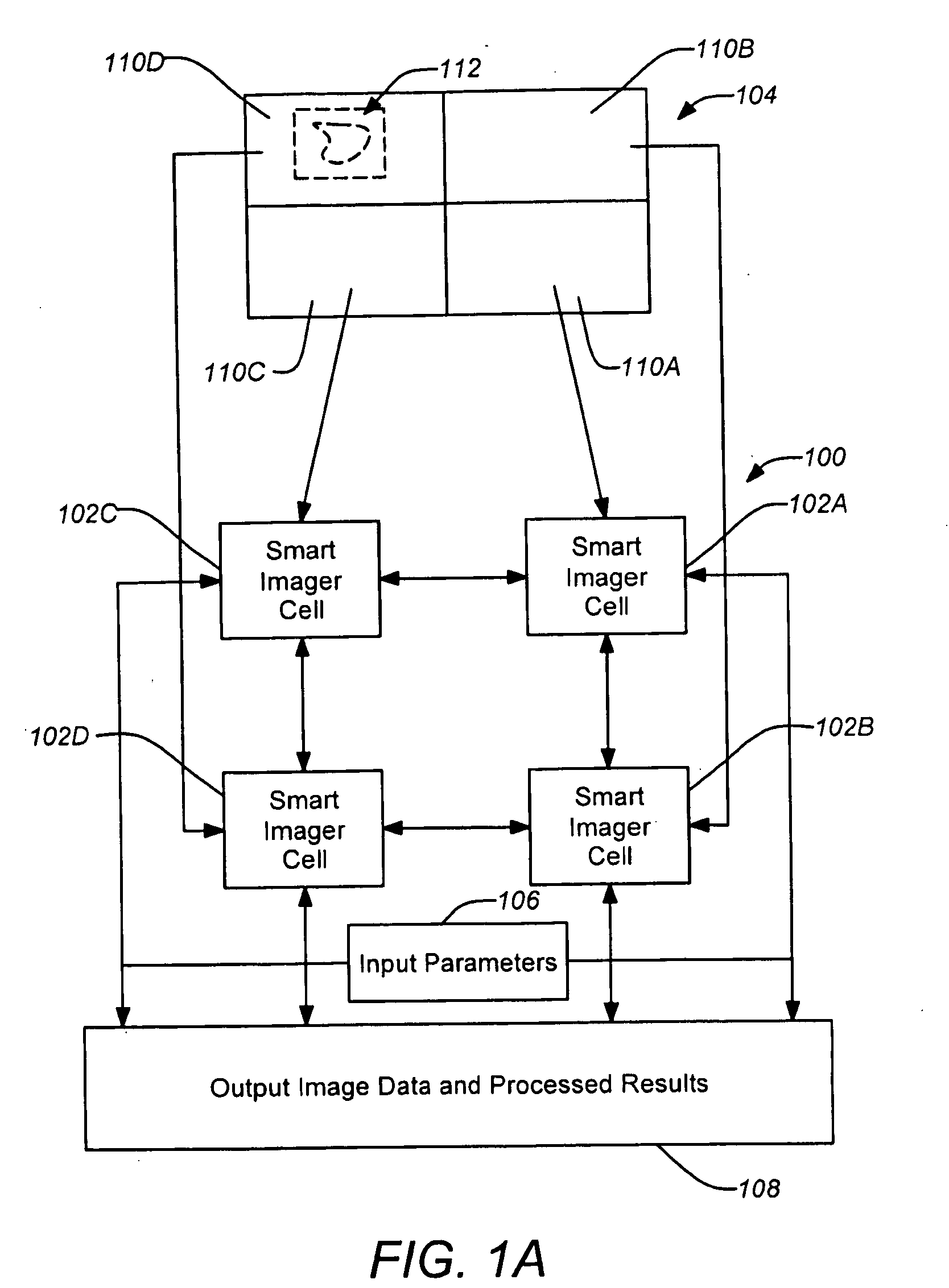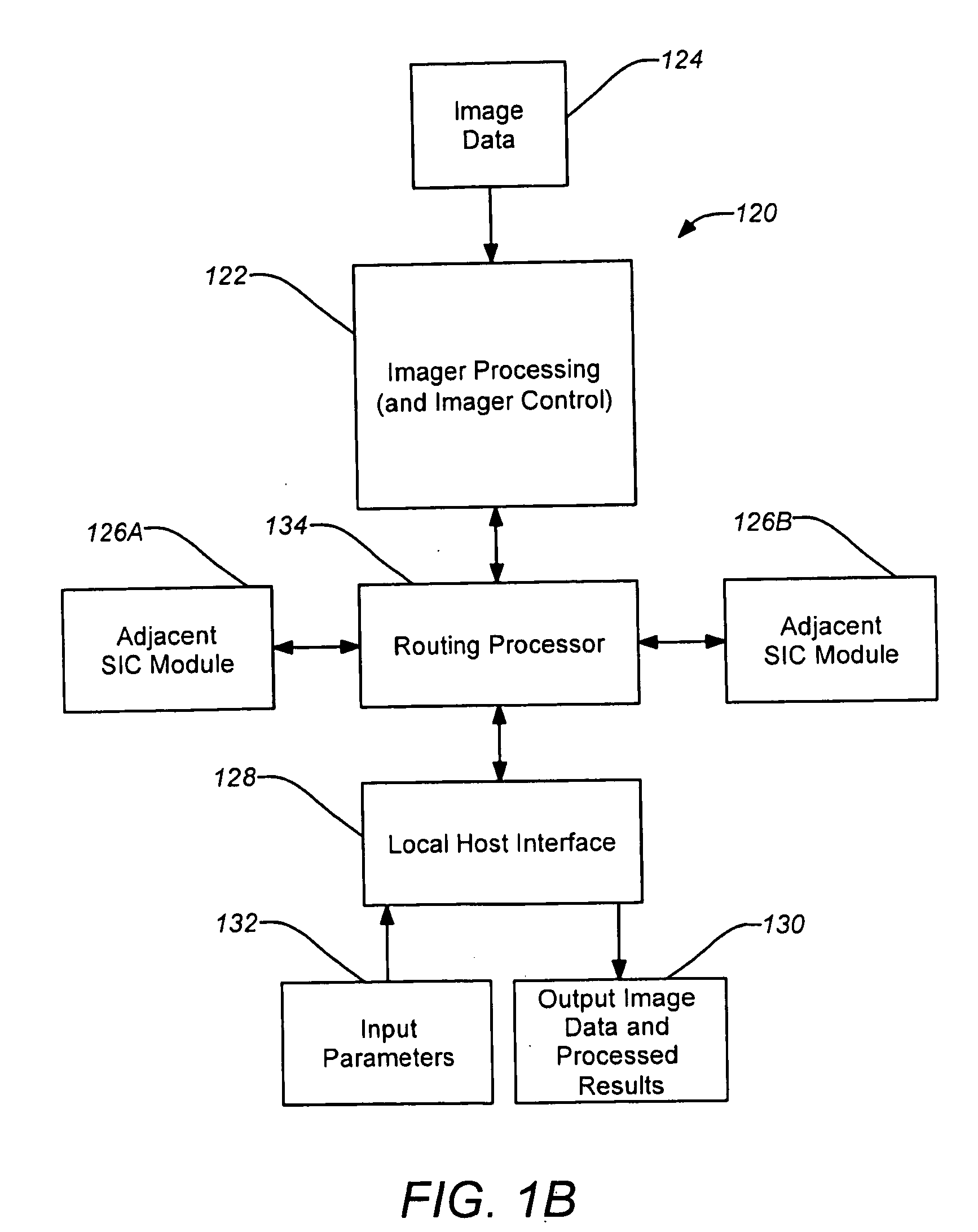Synthetic foveal imaging technology
a technology of synthetic fovea and imaging technology, applied in the field of image data processing, can solve the problems of large bandwidth for backend processing, lack of integrated processing and control, and inability to update the camera operational state, etc., and achieve the effect of rapid respons
- Summary
- Abstract
- Description
- Claims
- Application Information
AI Technical Summary
Benefits of technology
Problems solved by technology
Method used
Image
Examples
Embodiment Construction
[0030]1. Overview
[0031]As previously mentioned, embodiments of the invention are directed to apparatuses and methods that create a synthetic fovea in order to identify and highlight interesting portions of an image for further processing and rapid response. Unlike its biological analog, the synthetic fovea is not restricted to one contiguous region in the image. To accomplish this objective, synthetic foveal imaging provides a parallel-processing architecture that can use reprogrammable logic to implement embedded, distributed, real-time foveal image processing from different sensor types while simultaneously allowing for lossless storage and retrieval of raw pixel data.
[0032]Synthetic foveal imaging directly addresses a key technology gap faced by future applications that employ ultrahigh resolution focal planes for imaging and robotic vision—the problem of processing and responding to enormous amounts of data quickly and efficiently. A key new feature of synthetic foveal imaging t...
PUM
 Login to View More
Login to View More Abstract
Description
Claims
Application Information
 Login to View More
Login to View More - R&D
- Intellectual Property
- Life Sciences
- Materials
- Tech Scout
- Unparalleled Data Quality
- Higher Quality Content
- 60% Fewer Hallucinations
Browse by: Latest US Patents, China's latest patents, Technical Efficacy Thesaurus, Application Domain, Technology Topic, Popular Technical Reports.
© 2025 PatSnap. All rights reserved.Legal|Privacy policy|Modern Slavery Act Transparency Statement|Sitemap|About US| Contact US: help@patsnap.com



